


THE GatewayGardener Your Guide to Enjoyable Gardening and Easy-Care Landscapes ® MARCH 2023 FREE Courtesy of: Pollinator Power Plants Hardscape Design Trends Native Pollinator Keystone Plants Growing Potatoes
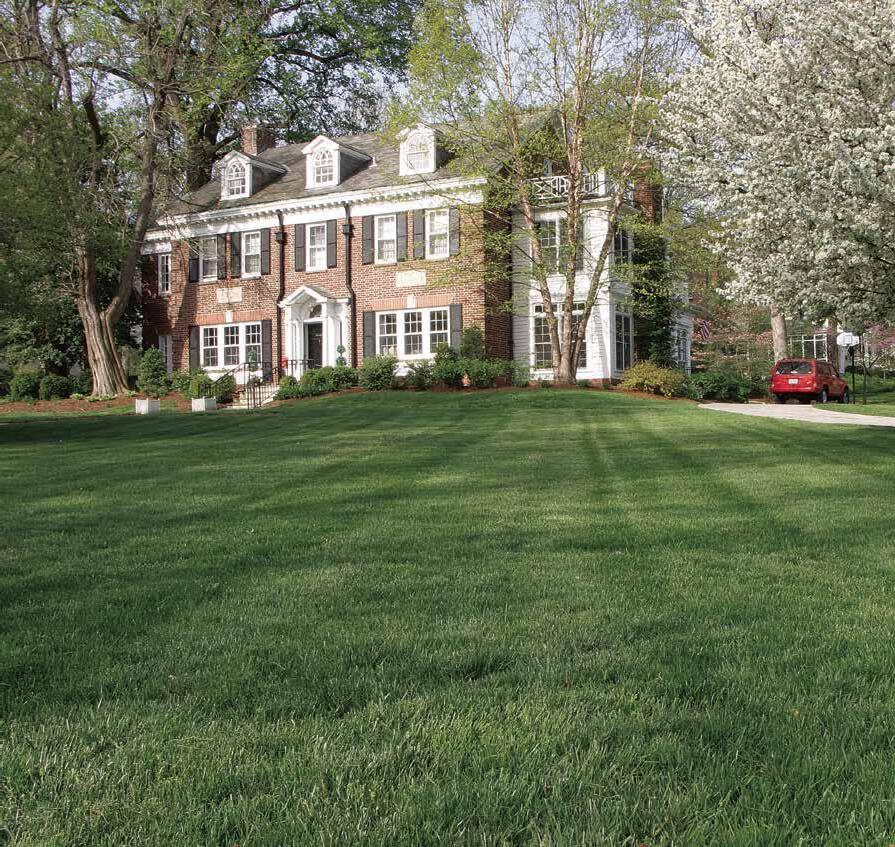


Look for these and other ferti-lome products at your favorite independent nurseries and garden centers. For plant care and information on over 8,000 plants, visit www.fertilome.com Enjoy a Crabgrass-Free Lawn! • Contains Dimension® for control of crabgrass and control or suppression of other annual grass and broadleaf weeds. • Slow-release lawn food for green, vigorous growth. • Available in 5,000 sq. ft. or 10,000 sq. ft. package. Crabgrass Preventer Plus Lawn Food
Volume 19, Number 1
Founded in 2005



 by Joyce Bruno & Robert Weaver
Publisher and Editor
by Joyce Bruno & Robert Weaver
Publisher and Editor
Robert Weaver

Columnists
Diane Brueckman
Rosey Acres
Abby Lapides
Sugar Creek Gardens
Steffie Littlefield
Edg-Clif Winery
Jennifer Schamber
Greenscape Gardens
Scott Woodbury
Shaw Nature Reserve
Printing: Breese Publishing, Breese, IL
The Gateway Gardener® is published 9 times/year by Double Dig Communications, Inc. to promote enjoyable, successful gardening and livable landscapes in the St. Louis greater metropolitan area. The magazine is distributed free to the public at designated garden centers, nurseries, garden gift shops, lawn equipment rental, repair and sales establishments, and other locations supporting sound gardening, lawn and landscaping practices.
Please send letters-to-the-editor, questions, event announcements, editorial suggestions and contributions, photos, advertising inquiries and materials, and any other correspondence to:

As I write these letters sometimes weeks in advance of publication, it’s sometimes hard to get in the spirit of the projected moment. Though I hope daffodils and crocus will be opening and birds will be chirping come March, the words are often written with little enthusiasm while snow blankets the ground and bitter winds howl at the windows. This year, though, inspiration was right outside the door. Before sitting down at the computer on this mid-February day, I walked through the garden to enjoy, not only daffodils and crocus, but snowdrops, winter aconite, hellebores and best of all, the native witchhazel (see pic). Oh the sweet scent, giving the neighbor’s honeybees something to really buzz about! Sure, we might pay, as we often do, with a mid-March snowstorm, but for now, I have the inspiration I need to welcome readers to the March issue!
Fittingly, seeing the honeybees and native flies and bees giving the witchhazel a once over today, the March issue features, not one, but TWO articles about plants that are pollinator magnets! The first comes from
Abby Lapides on page 4, and focuses generally on native as well as non-native ornamental garden plants that pack a pollinator punch! The second, from Scott Woodbury (pg. 12), narrows the focus on native plants that not only draw plenty of insects in for sweet rewards, but help support those insects all year long with food and shelter for their young as well as the adults.
If you’re looking for inspired thoughts of later in the season, when dining al fresco by the inviting blue waters of your swimming pool, you’ll find that, too, in the March issue, with a preview of some new design trends in the world of patios, outdoor kitchens and other outdoor living spaces.
Sally Evans, of Quiet Village Landscaping, invites us to explore hardscaping trends on page 10.
Finally, if you’re tired of all that INspiring and ready to get out in the garden and do some PERspiring, we have plenty of guidance for that as well in this issue. On page 8, Samantha Zale gives us a brief breakdown of some of the typical chores of spring we may want to schedule for March. And if one of those items on your to-do list includes planting potatoes for maybe the first time, check out Steffie Littlefield’s tips on growing that crop in your garden or in containers on your beautiful new hardscaped patio!

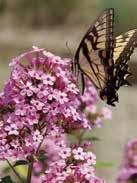
If your inspiration is still flagging, be sure to check out the Upcoming Events calendar. It’s packed with virtual and inperson events guaranteed to put the zippidy in your gardening do-dah! Whoa, I think that witchhazel aroma may have been a little too much!
Happy Gardening!
info@gatewaygardener.com www.gatewaygardener.com
On the Cover... If you want to please the bees and bedazzle the butterflies in your garden, plants like this Phlox ‘Jeana’ will do the job. Look for more plants that pack a pollinator punch on page 4. Photo courtesy North Creek Nurseries. IN THIS ISSUE 4 Plants for Pollinators 8 Spring Means Go Time 10 Hardscape Design Trends 12 Native Pollinator Plants 14 Growing Potatoes 16 Dirt and its Garden Relatives 18 Therapeutic Horticulture 19 Rose Care for Spring 20 Dig This 22 Upcoming Events
MARCH 2023
The Gateway Gardener
Magazine® PO Box 220853 St. Louis, MO 63122 Phone: (314) 968-3740
The Gateway Gardener® is printed on recycled newsprint using environmentally friendly soy-based ink, and is a member of the PurePower® renewable energy resources network.
THE
Your Guide to Enjoyable Gardening and Easy-Care Landscapes ®
From the Editor
GatewayGardener
Pollinator Plants That Pack a Punch!




 By Abby Lapides
By Abby Lapides
They’re creepy, they’re crawly and they’re in danger.
Biodiversity loss, especially insect diversity, is a major challenge that we are facing right now. Globally, most countries have committed to 30x30 – to preserve 30% of all terrestrial and marine habitat by 2030. While global cooperative conservation is essential to address this existential issue, we can
contribute by creating insect habitats at home. Only have a small yard? Don’t worry, a 10x10’ plot or even containers can help feed many insects. Because we can’t turn every inch of St. Louis into an insect habitat, pick long-blooming nectar and pollen-rich plants to feed pollinators. See some of my favorite plants below, not just for their ecological worth, but for their exceptional ornamental value.

With large clusters of pollen-rich flowers, one of the best plants for shade is the Missouri native smooth Hydrangea, Hydrangea arborescens. While the native is subtly pretty, the cultivar ‘Haas Halo’ adds spectacular presence with its oversized lacecap flower heads. The prestigious Mt. Cuba Center called ‘Haas Halo’ “… the perfect combination of horticulture excellence and pollinator value.” When blooming the plant turns into a busy hub of insects harvesting its vital pollen. If ‘Haas Halo’ isn’t available any smooth Hydrangea will do, even the mophead types, but the lacecap varieties will feed more pollinators.

4 The Gateway Gardener™ MARCH 2023 SPRING TIME 720 South 11th Street Belleville, IL 62220 618-234-4600 | effingergarden.com Over 40 Years Serving The Metro East Join Us at Our FREE WORKSHOPS Saturday April 8th at 12 noon • Proven Winner Plants: Our Favorite Annuals, Perennials, and Shrubs. • And “What’s New” for 2023 Saturday April 15th at 12 noon • Vegetable and Herb Gardening. Easy tips for success. Bring your questions and a friend. GARDENING... CHEAPER THAN THERAPY... AND YOU GET TOMATOES! www.greenscapegardens.com
native Hydrangea arborescens
Robert Weaver
‘Prelude
catmint, Nepeta, stuns with deep indigo-violet flowers that bloom for months from spring into summer. Open tubular flowers bloom in loose spikes on fragrant foliage. When blooming expect to see many cute little bee bums hanging out of these tasty flowers. Deer and rabbit resistant and drought tolerant once established. A great choice for spots that need a lot of flowers without much effort. To get another stunning flush of flowers shear back after blooming to encourage new growth.
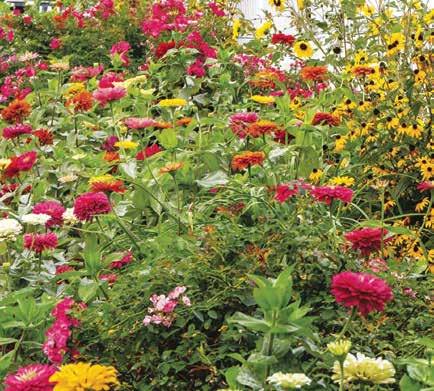

cont’d on next page




5 MARCH 2023 The Gateway Gardener™
Abby Lapides is owner and a speaker at Sugar Creek Gardens Nursery. She has degrees from the University of Missouri, and is a member of the Landscape and Nursery Association of Greater St. Louis. You can reach her at (314) 965-3070.
Purple’
Nepeta ‘Prelude Purple’
Zinnia State Fair Mix
Hydrangea ‘Haas Halo’
Ann Lapides
Plants Nouveau
Ann Lapides
cont’d from previous page
still thriving and blooming as strong as ever, over 30 years ago.
Top-ranking in horticultural and ecological evaluations ‘Jeana’ Phlox (see the front cover) shines as one of the best perennials for attracting butterflies to the garden. Large clusters of romantic pink flowers bloom summer through fall. When evaluated in comparison trials it was the favorite of butterflies, far outpacing the rest in visits, even the Missouri native. With almost completely pristine foliage and loads of flowers, ‘Jeana’ will wow you and feed those hungry butterflies.
On top of flowers add in host plants for butterflies and create spaces for wild bees to inhabit. Adding long-blooming annuals like zinnias, salvias or pentas will keep your garden blooming and feeding those pollinators when the hardy plants take their breaks. Avoid spraying any insecticide or if necessary, use one that will wash off quickly like insecticidal soap and only spray the unwelcome critters.
An old-time favorite Sedum ‘Autumn Joy’ is still one of the best for creating pollinator habitats in dry, rocky locations. Large flat pink flower clusters bloom late summer into fall. Usually flowering in Missouri when Monarch butterflies are at their peak, expect to see them along with skippers and bees mingling on these showy flowers. This hardy succulent thrives in sunny, dry, well-drained areas. Without aging myself too much, my mother planted many ‘Autumn Joy’ plants at her house the year I was born, and they are

Consider mowing less and keeping your lawn height taller. Or, if you’re feeling bold, replace your turfgrass with flowers. Turfgrass is basically little better than astroturf as habitats for most insects. The plants we try hard to remove for our lawns – clover, violets and dandelions—are excellent food sources for many pollinators. And they’re basically free and low maintenance, so ditch those herbicides and embrace the tapestry lawn!
If every person planted even just one small insect-friendly garden and stopped using harmful chemicals in their yard it would go a long way to help give our multi-legged friends a hand in their fight for survival. A happy world -and garden- is one that is full of insect life!
March
Featuring Guest Speaker Bevin Cohen!
Bevin Cohen is an award winning author, herbalist, owner of Small House Farm in Michigan and host of the popular Seeds & Weeds podcast. Bevin will conduct two programs, including:
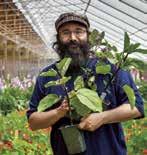
• Making Herbal Teas, Tinctures & Oils
• Saving and Sharing Seeds
Like Midwestern Herb and Garden Show on Facebook for an updated list of speakers and schedule!




6 The Gateway Gardener™ MARCH 2023 ManyVendorsandExhibitors! Freshherbs,herbsforculinary,medicinaland decorative use • bulbs,seeds,hypertufa,liveplants,herbal cookbooks,birdfeeders,housesandbaths
antiques,,china
spices,driedfloralarrangements,herbalsoap
gardendecor,homemadefudge,herbalspicesand blends,spicednuts,andmore. Times Square Mall, Mt. Vernon Friday & Saturday 10am-9pm FREE ADMISSION (618) 242-3151 midwestherbshow.com enjoymtvernon.com/events Celebrate Spring! at the 34th Annual Midwestern Herb & Garden Show
•
•
•
10-11, 2023
Walters Gardens
Sedum
‘Autumn Joy’

7 MARCH 2023 The Gateway Gardener™
Spring Means Go Time!
by Samantha Zale

Spring is a welcome sight as we dig ourselves out of the snow and cold of the winter season. This also means that the planting season is just around the corner! Right now is a good time to start preparing for planting. With us being in the St. Louis area, clay is a common component in our soils, which tends to cause a soggy situation in our garden beds. As we prepare for planting, mixing in a nutrient rich compost to our existing soils helps to
break up the clay, allow for better drainage and an overall improvement to the health of our plants.

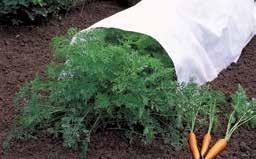


Spring is also the time to start planting cool season crops and annuals like lettuce, kale, arugula Swiss chard and pansies. However, herbs like basil will be ready to come out once the threat of frost has passed. Being in St. Louis, it is unfortunately hard to know for sure when that might be. Historically, March can still be quite chilly, and we have even had some significant snows in April. To be ready for

8 The Gateway Gardener™ MARCH 2023
HELLEBORES OUR FAVORITE FIRST SIGN OF SPRING GARDEN HEIGHTS NURSERY 314-645-7333 1605 Big Bend Blvd. St. Louis, MO 63117 www.gardenheights.com
123rf.com
Crops started indoors (top photo) may need early protection, such as this crop cover (bottom photo).
this, we need to have a plan in place. Have a protected space ready to store sensitive plants like tropicals and annuals; for example, in the garage in the event of a frost warning or if snow is predicted. Frost cloth can be very useful if the area is too large or plants cannot be moved. There are products on the market that are specifically designed for plant protection, however, if you are in a pinch you can use an old bed sheet. The main thing to keep in mind is not to use plastic for frost protection because it can cause damage to the foliage if the plastic directly touches the plant.



Once your new spring plants have been purchased, they may need some time to acclimate to their new environment, which means if the plant was indoors or protected when it was purchased it will need a few days to transition to the outside. If the weather is nice, it can be brought outside during the day to get some bright but
indirect light and then tucked back in at night. The reason why many perennials, trees and shrubs are able to go directly in the ground is because they had a chance to harden off (acclimate) by being outside at the garden center.
As new plants are being purchased and you are planning for the new season. It is important to remember things like root stimulators and fertilizers. Many plants like trees and shrubs benefit from the extra boost that a root stimulator can provide to help encourage root growth. Establishing healthy roots first is important because, without a strong root system, the plant will struggle with flower and foliage production. After a few months those plants will be ready for some fertilizer. There are so many types of fertilizers on the market, but the main thing to keep in mind is to get something formulated for what you want to use it on. For example, there are specific blends just for tomatoes or flowering annuals or evergreen trees. Finding the correct type of fertilizer is important because it puts the growth exactly where the plant needs it. It’s also important to begin a good watering regimen with your new plantings. Each plant is going to have different needs, so be sure to talk to your folks at your garden center to find out more about the specific needs of that plant.
With all that said, let’s get out there to prep our garden beds, pay attention to the weather, gather supplies and talk to the folks at garden centers. This is a solid process that sets us up for success for the growing season!
Photos by the author except as noted.

9 MARCH 2023 The Gateway Gardener™
Samantha Zale is a Content Creator for Greenscape Gardens, and also manages Front Desk Operations and Customer Support.
The author’s raised garden bed, amended and ready for planting.
Hardscape Design Trends

To inspire your Landscape Renovation

Text and Photos by Sally Evans
Looking for creative inspiration for your outdoor space? These are the hottest trends in hardscapes - the non-living elements of your landscape - seen in new designs, material selections, and in-demand outdoor amenities.
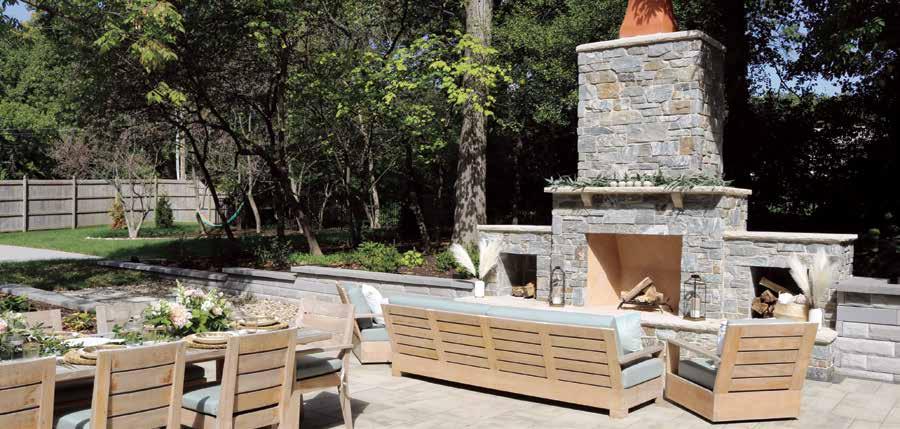
Zick’s Great Outdoors

Play with Fire
Fire features are becoming essential in landscape planning. Modern fire bowls and fire tables are trending to serve as cozy gathering places, especially for evenings. Natural gas makes igniting the spark easy, and wood can be burned in a rustic fire ring or free-standing outdoor fireplace. Seating can take the shape of a terraced retaining wall, natural boulders, or surrounding all-weather chairs.
Polished Pewter
“Gray is trending in a big way, with ivory, black, and sand tones being featured in modern landscape designs” says Tom Johnson, Senior Landscape Designer at Quiet Village Landscaping. Monochrome mixed with contrasting color statements are also popular in hardscaping materials, bringing a resort-like quality to new outdoor living spaces.
Permeable Materials
Drainage issues have come to light for many homeowners affected by the historic flash-flooding we experienced last summer in July, when St. Louis received its heaviest recorded rainfall in over a century. A landscape renovation should always take stormwater drainage into account. Permeable pavers, gravel, wood chip / cedar chip, and stone can be used instead of concrete to allow for improved drainage. Trees, shrubs, and

10 The Gateway Gardener™ MARCH 2023
Open 7 days a week @ 16498 Clayton Rd. (Corner of Clayton/Strecker in Wildwood) #1 Customer Comment:
place is incredible!” With over 8 acres of large trees, perennials, shrubs, annuals and much more. Come see a REAL nursery! (Not a box-store parking lot.) One of the Midwest’s Most Unique Nursery Experiences St. Louis’ supplier of pine straw! 636-458-1445 “Like” Us on CELEBRATING 43 YEARS with New Shipments Arriving Daily!
“This
native grasses can also work wonders to soak up water.
Large Format Pavers
While bricks and pavers several years ago tended to be smaller in size, larger pavers have become increasingly popular. Bigger pavers have fewer jointing lines to break up the surface, making your patio or walkway appear more expansive. Contrasting colors, textures, graphic patterns and mosaics can be used to create separation and define spaces.
Already have bricks? Historical clay bricks can be used in borders or in accent patterns for a unique Brick City style that repurposes materials.
Preorder for spring!
Island Time
Current outdoor kitchen trends have seen the experience go upscale. Convenient amenities make cooking outside more enjoyable, and every kitchen needs an island with countertops to serve as a place for all of the magic to happen. A daytime snack bar turns into a happy hour hotspot at night. Some favorites:

• Refrigerator and ice-maker
• Warming drawers
• Built-in countertop side burners
• Faucet and sink
• Outdoor pizza oven
• Ceramic grill / Charcoal smoker
• Herb garden close to the food prep area
Eco-Appeal
Sustainability and resourcefulness is also becoming more popular, with an increased concern for environmental impact and requests for native plants. Homeowners are also seeking to remove invasive species, particularly aggressive ones. Bush honeysuckle, Callery pear trees, Wintercreeper euonymus, Japanese honeysuckle, and Bamboo are all recommended for removal by the MO Department of Conservation, with municipalities like Olivette adding these to their “No Plant” lists. Belgard, Techo-Bloc, and Unilock all make high-quality hardscaping materials, and Primo Ceramic Grills make an excellent choice for a locally crafted charcoal grill. Some new hardscape projects may require permitting, and it’s best to check your municipality’s website for information, or partner with an authorized contractor.
Sally Evans is marketing manager for Quiet Village Landscaping, a full-service landscaping company. Find out more at info@quietvillagelandscaping.com.
Voted #1 Best Garden Center

Rose Verbena | 2023 Native of the Year
A favorite Missouri native perennial, Rose Verbena gives us clusters of rose pink blossoms from late spring through late summer, well into fall. The sprawling, low-growing habit makes it an ideal ground cover. It resembles its annual cousin, but this beauty queen is hardy! Rose Verbena makes a top choice for the garden, containers, naturalized, and for spilling over rocks, borders, and walls. Rose Verbena is easy to grow in average, well-drained soil in full sun. Available for preorder at www.sugarcreekgardens.com

11 MARCH 2023 The Gateway Gardener™ 1011 N. Woodlawn | Kirkwood | 314.965.3070 | sugarcreekgardens.com
Naturally Natives
When a Rose Isn’t Just another rose
by Scott Woodbury
It’s clear to me that some plants attract more insects than others. Blazing star (Liatris) and mountain mint (Pycnanthemum) are clamoring with pollinators when they are in bloom. So are Joe Pye (Eutrochium), iron plant (Vernonia), sunflower (Helianthus), and black-eyed Susan (Rudbeckia). Black gum (Nyssa sylvatica), linden (Tilia), Virginia creeper (Parthenocissus quinquefolia), and

Missouri Wildflowers Nursery

9814 Pleasant Hill Rd Jefferson City MO 65109 www.mowildflowers.net
mowldflrs@socket.net
573-496-3492, fax: 573-496-3003
Meet us at one of these locations in St. Louis. Give us your order by Tuesday before a sale, and we will bring it to the location.
Kirkwood Farmer’s Market, 150 East Argonne Dr. Kirkwood MO 63122. Give us your order by Tuesday before a sale, or pick from the selection at the market. April 1,8,15,22, & 29, and May 20 & 27; 8 a.m. to 4 p.m.
Shaw Nature Reserve, 307 Pineton Loop, MO 63039. Event: “Shaw Nature Reserve Spring Wildflower Market,” May 6, 9 a.m. to 1 p.m. Member’s only sale Friday, May 5, 3 p.m. to 7 p.m. www.shawnature.org.

Beyond Housing Headquarters, 6506 Wright Way, St. Louis 63121 Native Plant Fair/Sale. April 30 (Sunday), 9 a.m. to 2 p.m.
Now OPEN at our Brazito (Jefferson City) location.
willow (Salix) are audible when in bloom, because they’re covered with clouds of buzzing bees. Milkweed (Asclepias) and spikenard (Aralia racemosa) are not only covered in pollinators, but also sugargathering ants and predators like jumping and crab spiders, who linger for a chance to ambush a pollinator for lunch. These native plants provide nectar and pollen “superfood” for insects.
You can see for yourself how insects will flock to your home landscaping by adding native plants and spending time looking at them. But be sure to include top-performing superfoods for insects

Scott Woodbury was the horticulturist at Shaw Nature Reserve for 30 years and stepped down from that position in June 2022. He continues to work on contract for Shaw Nature Reserve to carry out native landscaping education, and has launched his own business called Cacalia: Native Garden Design and Wilding. Scott is also founder of the Wild Ones St. Louis Chapter, which financiall supports this column. Find suppliers of native plants, seeds, and services at the Grow Native! Resource Guide: www.moprairie.org.

12 The Gateway Gardener™ MARCH 2023
A bumblebee finds interest in the offerings of iron plant (Vernonia spp.).
Eastern blazing star and Texas green eyes are irresistable to this visiting monarch.
Robert Weaver
Scott Woodbury
Tips and Resources for Growing and Landscaping with Sustainable Native Plants
at Native Plant Finder (National Wildlife Federation) and Plants for Birds (Audubon Society).
Unfortunately, not all keystone species work well in the average home landscape. Black willow (Salix nigra) for instance, is an aggressive spreading plant, but luckily, prairie willow (Salix humilus) is not. It’s the most compact native willow, averaging 5 feet tall, and available in nurseries. I’ve found cliff (Solidago drummondii) and showy (Solidago speciosa) goldenrods to be the least aggressive goldenrod species. Wild strawberry (Fragaria virginiana) spreads with runners, but it is a useful filler plant that meanders between larger perennials and grasses and reduces the need for mulch.
Maples (Acer) are frustrating to garden under because they have shallow, dense roots that compete aggressively with anything growing beneath them. Easier trees to garden under are black cherry (Prunus serotina), and shortleaf pine (Pinus echinata). They’re also narrow and upright, and fit into small garden spaces.
in your home garden—not just pollen and nectar for adult insects, but also “foliage food” for insect larvae. Here’s what scientists say are the best performers.
In recent decades, Doug Tallamy and Kimberly Shropshire, entomologists at the University of Delaware, have been recording

Gardening with keystone plants is a game changer for wildlife. This practice significantly increases the capacity of your garden to attract more butterflies, bees, moths, and birds, and is fun for the whole family. I guarantee that you will see a difference in your yard by including more superfood native plant species.

Happy gardening y’all!
...the days will lengthen, the ice will melt in the pasture pond. The song sparrow will return and sing, the frogs will awake, the warm wind will blow again. All these sights and sounds and smells will be yours to enjoy… this lovely world, these precious days…
butterfly and moth interactions with native plants. It turns out that some native plants are far better at feeding caterpillars than others. Tallamy calls them keystone plants. Wherever they looked, about 5% of native plant genera were responsible for feeding about 70% of butterflies and moths. For instance, yellowwood (Cladrastis kentuckea) has no record of caterpillars feeding on it, while oak (Quercus) has 429 species on record for our region. Cherry and plum (Prunus) have 318, willow (Salix) 257, birch (Betula nigra) 251, maple (Acer) 235, pine (Pinus echinata) 154, and rose (Rosa) has 98. For perennials, goldenrod (Solidago) tops the list with 97, sunflower (Helianthus) 73, wild strawberry (Fragaria virginiana) 59, leadplant (Amorpha) 32, Joe Pye (Eutrochium) 30, and geranium (Geranium maculatum) 23. The full list of keystone plants is available online

13 MARCH 2023 The Gateway Gardener™
CONNECT NATURE 88 Forrest Keeling Lane | Elsberry, MO 63343 | 573-898-3010 | forrestkeeling.com
FOR THE SEASON | OPEN MARCH 15
~ E.B. WHITE, “CHARLOTTE’S WEB”
CLOSED
Scott Woodbury
Scott Woodbury
This native leafcutter bee goes right to the heart of the matter on this black-eyed Susan.
Mountain mint is an equal opportunity attraction for bees and butterflies.
The Cornucopia Corner
Potatoes
By Steffie Littlefield
After studying the exhibit in the Museum at the Missouri Botanical Garden a few years ago, I had a renewed interest in growing potatoes. I was amazed at the diversity of tubers that come from the same genus and that they could be found independently from each other all over the world. “What, not all potatoes are from Ireland?” OK I’m not trying to take the romance out of these orbs filled with creamy white flesh, but just point out that there is a lot more diversity of flavor, color and growing environments than expected. You might do some fun light research and find one that appeals to you.
When thinking of growing potatoes the first thing many people say is that most potatoes are relatively inexpensive to purchase, but freshly dug potatoes from your own home garden seem to have a flavor unmatched by store-bought potatoes. Some people are surprised that potatoes are not grown from seed but from seed potatoes, which sprout underground and grow more tasty tubers. Knowing this you can imagine that after you harvest you might try to save some potatoes for the next growing season.
Potatoes, according to my grandmother, should be planted when the dandelions start blooming and other sources agree that they should be planted two weeks before the last freeze. Traditionally this turns out to be near Saint Patrick’s Day, which is fairly easy
NEED A SPEAKER for your Garden Club or Group?
Master Gardener Speakers Bureau volunteers are available to speak to garden clubs, church, civic and other groups. Choose from 53 programs, including A Dark Side to Winter Damage, Backyard Composting, Soil Preparation, Daylilies, Orchids, and more.

Explore the complete list of topics at www.stlmg.org. Look for the Speakers Bureau tab in the top margin.
(A $50 fee funds Master Gardener programming in our community.)


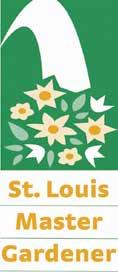
to remember, since a common name for the favorite baking russet potato is “Irish Potato”! There are more than 100 varieties of potatoes commonly sold, generally divided into three categories: russets and long, white potatoes, which work well for potatoes that will be baked, boiled, or fried; round white potatoes, which are most commonly used if you will boil potatoes or use them to make potato chips; and red-skinned potatoes, which are frequently used for boiling, baking, mashing, or in potato salads. There are many heirlooms with different colored flesh as well, such as blue or gold, and different shapes.
Some tips to grow potatoes successfully:

1) To extend your potato growing season, choose an early variety as well as a late-season variety. You plant these at the same time, but the late-season variety will be harvested several weeks after the early season potatoes.
2) Buy certified disease-free seed potatoes. Attempting to plant potatoes purchased from the grocery store could result in a disease problem or no potatoes to harvest, since they are often treated with a growth inhibitor to keep them from sprouting in the grocery store.
3) Don’t plant potatoes where tomatoes or eggplant were grown the year before. These vegetables are in the same nightshade family as potatoes and can attract similar pests and problems.
Planting potatoes can be done in several ways, each calling for soil or compost to be added as they grow to increase the depth of the tubers to keep them out of light and evenly moist and to support the stem of the main plant. A traditional potato planting
Steffie Littlefield is a St Louis area horticulturist and garden designer. She has degrees from St. Louis Community College at Meramec and Southeast Missouri State and is a member of Gateway Professional Horticultural Association, Missouri Botanical Garden Members Board and past president of the Horticulture Co-op of Metropolitan St. Louis. She is part-owner of Edg-Clif Winery, Potosi, MO. www.EdgClif.com, and teaches a class on viticulture at SLCC-Meramec.
14 The Gateway Gardener™ MARCH 2023
123rf.com
method is the trench which involves digging a shallow trench about 6 inches deep and placing the seed potatoes in the trench, eyes facing up, then covering the potatoes with a couple of inches of soil. As the potato plant grows, the soil is continually hilled up along the sides of the plants. You can stop hilling up soil when the plants begin to flower. Some gardeners prefer a simple scatter method, basically laying the seed potatoes right on the soil and then covering them with a few inches of mulch. You can continue layering mulch as the plants grow. If you have a rodent problem, this method is probably not your best choice. Like many other veggies, potatoes don’t have to be labor intensive, and can be grown in pots for those utilizing small spaces. I’ve even had volunteer potatoes grow from scraps that ended up in my compost. I was able to harvest those volunteers and eat some delicious fresh tubers. You can even plant potatoes from your pantry, but make sure to use organic ones.
Potatoes love full sun to bolster top growth, which will encourage the growth of more roots. They can handle part shade, but it’s the lush top growth that feeds the tubers underground. The more sun, the better—at least six to eight hours per day. Grow your potatoes in soil with an acid PH, when grown in soils with a higher pH the tubers seem prone to scab, which produces rough spots on the potato. Best to have a good amount of organic matter in the soil. If you have heavy clay soil, you will




need to amend it with compost to the depth where the potato tubers will grow. Make sure the plants receive at least one inch of water per week. They are sensitive to drought conditions, especially when they flower, as that is when the potato tubers are forming. Adding compost or mulching around the plants can help retain moisture. You can fertilize your potatoes with an organic slowrelease fertilizer when you plant them and every couple of weeks, give them a feeding with diluted liquid fertilizer or fish emulsion.

You can start harvesting “new potatoes” (small, immature potatoes) in about 4 weeks once the plant reaches about one foot in height—about 50 days after planting. When the plant is in flower, the new potatoes are generally ready to harvest. Explore in the soil near the base of the plant and gently lift them out. Expect to wait two to four months (up to 120 days) for potatoes to reach their full size. The entire crop is ready to harvest once the tops of the plants die back. You can leave the potatoes in the ground for a few weeks longer, if the soil is not wet. Finally harvest carefully by hand or with a shovel turning the soil over slowly to reveal the round or oval treasures. The tubers can branch out, and digging in with a fork is a sure-fire way of piercing a potato or two. Damaged potatoes are still edible, but they won’t keep for long. Enjoy your well-earned fresh potatoes with your other early spring vegetables!

15 MARCH 2023 The Gateway Gardener™
Dirt and its Garden Relatives
A Soil is Not a Compost is Not a Mulch
Text and Photos by Robert Weaver
My horticulture instructor at Meramec had a favorite saying when a student would refer to the stuff we grow things in as “dirt”: “It’s only dirt if you track it onto the carpet. Otherwise, it’s SOIL!” No matter whether you call it dirt or soil, the whole topic of soils…and compost and mulch, can be a little confusing, especially for new gardeners. Can I use top soil to make a raised bed or for growing plants in containers? What’s the best mulch to use? What’s the difference between compost and mulch? Knowing the answer to those questions may spell the difference between a successful garden and a frustrating one. So here’s a primer on dirt and its kin.
SOIL
At its essence, soil consists of 3 minerals: sand, silt and clay, classified by their grain size. Sand is the largest, followed by silt, and clay being the smallest. The ratio of the three minerals will determine characteristics of your soil, such as moisture retention and drainage. The classic soil triangle that every horticulture student will be familiar with illustrates how soils can be classified based upon this ratio. Soil high in sand content will have greater porosity and less ability to hold moisture and nutrients. Soil higher in clay content (hello St. Louis gardens) will be more compact and have greater moisture and nutrient retention.

Okay, that’s soil in the lab or on Mars. But real soil also has organic matter (dead residue of living things like plants and animals), and living microorganisms (worms and much, much smaller, invisibleto-the-eye squiggly things). For gardeners (and lawn lovers), this is what gives your soil it’s growing ability. Organic matter helps improve the holding capacity of sandy soils, helps open up heavy clay soils, and adds nutritional value. (This is a primer, it’s all so much more complicated than this, with lots of fungi, bacteria and other things getting’ down and dirty in the soil. But you get the idea.)
So, now that you know the basics of soil, what are all the products that say soil on the bag, and which is right for you?
Let’s start with Top Soil. Top soil in nature is, as the name suggests, the top layer of soil, which contains most of the organic matter found in soils. It is usually screened to remove sticks and other debris. There are no industry standards for percentage of organic matter, so when choosing top soil it is best to buy a name brand product as opposed to a commodity brand. Top soil is a good choice for filling in holes or low spots in a lawn, changing elevation or slope in a landscape, or serving as a base/filler in raised beds. But in garden beds it will need to be supplemented with some sort of organic matter, either yard-waste compost, cotton burr compost or other compost/manure mixture. Typically the ratio of top soil to organic matter should be 1:1 or 1:2.
Many bagged soils say “garden soil” on the bags. These products are typically a mixture of top soil and organic matter such as compost, peat moss or other organic amendment. They may also include a charge of synthetic or natural fertilizer. They can be used for raised beds as well.
If you have a large project, you might save money by buying your soil in bulk. Suppliers such as St. Louis Composting have a variety of soil options that homeowners can either pick up with a truck or trailer, or they will deliver for a fee (they also sell bagged versions of some of their products). Their Raised Bed Mix is a blend of topsoil, sand, pine bark fine and their Black Gold compost for ideal growing conditions in raised beds. Their Rain Garden Mix is a blend of soil and compost for bioretention and rain garden applications. Topsoil Plus is a 70/30 blend of river-bottom topsoil and compost they suggest for a base for sod or as a garden bed restorative. Their Garden Mix is a 50/50 blend of topsoil and compost for enhancing raised beds or other planting areas.
COMPOST
When you see bagged compost, it can be many things. It might be composted (decomposed) yard waste (leaves, sticks, etc.), manure compost (a mixture of animal manure and straw or sawdust, cotton bur compost, or other organic composted matter). All are useful amendments to mix into soil to improve aeration, soil porosity and moisture control, and nutrition in new or existing gardens. They are also beneficial for top-dressing lawns. As with soils, compost can also be purchased in bulk from suppliers like St. Louis Composting.
MULCH
Like compost, mulch can be many things, from composted yard waste (called leaf mulch or leaf mold) to chipped or shredded wood (oak and other trees, shredded pallets or waste from woodproduct manufacturing) pine needles (pine straw), straw, or nonorganic mulches like gravel or rock. What you use may depend on personal aesthetic preference, but more appropriately, should be chosen for the plants you are mulching.
Rock and gravel are ideal for plants that like a dry, hot environment (rock gardens), but for most shrubs, perennials and annuals, these
16 The Gateway Gardener™ MARCH 2023
123rf.com
materials tend to reflect and retain the sun’s heat, often causing plants to stress in hotter months.

Leaf mulch, or leaf mold, is partially decomposed yard waste, and is ideal for use around annual and perennial gardens. (And to answer the question posed in the opening paragraph, the difference between compost and leaf mulch is simply the degree of decomposition.)



It is the preferred mulch at the Missouri Botanical Garden for most of their ornamental beds. It suppresses weed growth, helps retain moisture in the soil, and adds nutritional value to the soil as it decomposes. It also decomposes quickly, reducing the risk of mulch piling up over subsequent annual applications. It is not as commonly used as wood mulch, so is not as readily available. It can be purchased from suppliers like St. Louis Composting, and
loving plants, or by transplanted Southerners who are accustomed to the mulch more commonly used in Southern states. It is not readily available in this area, but Zick’s Great Outdoors in Wildwood and Effinger’s Garden Center in Belleville are two suppliers carrying pine straw bales.
is also sometimes available for free to homeowners in various communities. Check with your City Hall.
Pine straw is sometimes used around evergreens or other acid-
Wood mulch—ground or double-ground—is the most commonly used mulch, due to homeowners’ preference and the preponderance of folks driving around offering it inexpensively. It is fine for most annual, perennial and woody (tree and shrub) plants. It doesn’t decompose as quickly as leaf mulch, so may not need to be reapplied annually, and in fact, if done so, may build up to levels that inhibit oxygen exchange in the soil. If annual reapplication is desired, some or all of the previous year’s mulch should be removed so mulch levels remain at 4” or less. Also, because it doesn’t decompose as quickly, it doesn’t release as much beneficial goodies into the soil.
Finally, straw mulch is often used in vegetable gardens to suppress weeds and disease, and control moisture. Be sure to buy straw, and not hay, or you will be visited by an abundance of grassy weeds. So, choose according to your preference, hopefully with some consideration for the plants’ preferences as well. And take as you wish one garden designer’s opinion on its use: “Mulch should be the underwear of the garden, not the party dress!”
17 MARCH 2023 The Gateway Gardener™
Leaf mulch used in a rose bed at Missouri Botanical Garden.
Pine straw in the author’s garden, used in a path.
Wood mulch in a vegetable garden.
Therapeutic Horticulture Phenology for the Garden...And You!
 by Jeanne Carbone
by Jeanne Carbone
As spring unfolds, there is much to notice in the natural world. Paying attention to the changes which occur on almost a daily basis brings our focus to plants, animals, bird, insects, each component of nature. We are different too; longer days of sunshine energize us, the prospect of hands in the dirt is upon us and we look forward to the growing season.
One way to increase our awareness of the cycles of change in nature is the practice of phenology. Phenology has been defined as nature’s calendar, the study of the seasonal changes in plants and animals. It can be practiced in different ways; for instance, choose a particular plant in your space. Observe the changes which occur over time, from the presence of buds, the peeling of bark layers or the appearance of new growth. Make note of the changes in a journal, with sketches, writing, even rubbings. Another method is the use of a phenology wheel. Mark the changes in a plant or in a space by noting the colors with colored pencils. As your entries evolve over the seasons, the colors of the wheel will reflect the unfolding.
Therapeutic Horticulture is the practice of deepening our connection to nature to improve well-being.
The use of a phenology wheel is one way to deepen that connection. Learn other ways by participating in Adult Education classes at Missouri Botanical Garden offered by Therapeutic Horticulture staff. Nature Mandalas, Creating a Sensory Garden, Journey to Wellbeing are a few examples. For additional offerings, explore the class catalog sections on Nature Study, Well-being and Gardening.

Join the Therapeutic Horticulture team the week of March 27th to celebrate Well-being Awareness Week. Special activities will take place Wednesday and Friday mornings in the Jack C. Taylor Visitor Center from 10- noon. Learn more about how to engage with nature to improve well-being and information regarding classes led by the Therapeutic Horticulture team. In addition, Sensory Awareness Walks will be led at various times throughout the week. Stop by the Visitor Engagement Station for more information.
Practical Phenology Applications
Not only is the study of phenology a fun and relaxing way to better understand nature, but it can also have even more practical applications for the gardener. Many nursery pros, for example, dispense advice to homeowners to apply crabgrass preventer to lawns when forsythias (above) are in full bloom. Events happen in the garden, not according to a calendar, but according to the influences of day length and temperature and moisture fluctuations. Weeds—like crabgrass—will start to grow with soil temperatures and moisture are conducive to doing so. Other plants are also affected by those influences. So the forsythia may bloom in March one year, and not until April another year. If control methods are applied at the same time every year, you might miss the time of greatest efficacy. Crabgrass preventer is just that—it prevents crabgrass from emerging. Once the weed is up, it’s a wasted and costly effort to apply preventer. The same is true of insects and insect control methods. To everything there’s is a season... The book, Coincide, The Orton System of Pest Management, by Donald A. Orton, is an excellent source for learning about the phenological relationships in the gardening world around us.
Jeanne Carbone is the Supervisor of Therapeutic Horticulture at the Missouri Botanical Garden. She has a Master’s degree in Education with an emphasis on Outdoor Education, and holds a certificate in Horticulture Therapy from Chicago Botanic Garden. She has been involved in this work for 10 years.

18 The Gateway Gardener™ MARCH 2023
--Ed.
Rose Garden Spring To Do List
by Diane Brueckman
Spring is just around the corner and it’s time to start thinking about our roses. My first thought is don’t uncover your roses until April 15. So far winter has not been overly cold or wintery but just as we start thinking winter is gone it will rear its frosty head and nip our roses. Some will not survive a deep freeze, others may not be affected, but why take a chance by uncovering the roses too soon. There are some chores that need to be done that will satisfy that urge to get into the rose garden.
Start by cleaning up any climbers you have by cutting the lateral canes back to 4 bud-eyes and removing any dead or diseased canes. This will encourage more bloom along the main canes. Roses typically bloom at the ends of the canes, by trimming the lateral canes you will get blooms at the ends of the lateral canes. Clean any weeds in the climber beds and add an organic fertilizer. Scratch the organic fertilizer into the top of the bed and add fresh mulch. Your climbers are now ready to face another season.

Next job is to clean up your shrub roses. All roses appreciate a good pruning and that includes the ‘Knock Out” family of roses. Thin out the center of the plants by removing crossing canes (canes growing through the center of the bush) as well as any spindly, broken or diseased canes. Trim about 1/3 of the plant’s growth. You will be rewarded with more bloom and a well-behaved bush. Clean up the beds as you did for your climbers. Doing both the climbers and shrubs will give you a head start on opening your garden for a summer of beautiful blooms.
Check with local nurseries to see what they have. As consumers we must make it known that we are interested in the hybrid tea, floribunda and grandiflora roses and support the nurseries that carry them. There has been an increased interest in roses since the covid shut-down.

Hopefully, that interest will be noticed by the local nurseries and reflected in the roses they offer. Many of my rose-growing friends are searching for these beautiful roses to no avail. Even the miniature roses are scarce. One advantage to shopping at the local independent garden sources is the care the plants are given. Their staffs are trained to recognize the needs of the plants from the day they arrive. You also see what you are getting and can get advice from the staff on care and feeding of your new plant. One idea is to look on the Weeks Roses and Star Roses and Plants websites. When you find a rose you like they have a tab that will take you to a site that will give you locations, in zip code, that sells their roses.
There are many mail-order sites that sell roses. They do sell out quickly, so check early. If you order bare-root roses through a catalog, be sure they ship no later than April for planting in St. Louis. When the roses are potted the timing is not as critical. A potted rose can be planted any time. Usually, the potted roses are own-root and very tiny. The rose will need to be babied for the first year but I have heard they usually do well. I do not recommend mail-order simply because you do not know what you are getting and the price is usually very high.
Let me say again, we need to make our wishes known or we will lose many options for purchasing the roses we love.
19 MARCH 2023 The Gateway Gardener™
Diane Brueckman is a retired rosarian with Missouri Botanical Garden, and currently cares for her roses in Waterloo, IL. You can reach her at (618) 785-3011 or droseyacres@ egyptian.net.
Pruning lateral canes climbing roses will encourage more blooming.
Robert Weaver
Dig This!
Gateway Gardeners and Businesses in the News

Native Specialist Plants New Seeds
Over the past 30 years, Scott Woodbury led development of the Whitmire Wildflower Garden at Shaw Nature Reserve. He has written—including The Gateway Gardener’s popular series on native plants for the last decade or more- lectured, and consulted on many native landscaping subjects, projects and programs. In 2022, Scott began a new chapter in his working life with a new business, Cacalia Design and Wilding. He does residential and commercial consulting and design, and wildlife habitat planning. Scott writes, speaks and also teaches Native Landscaping Practices, a course at St. Louis Community College. Other services include garden coaching and plant identification and inventory. (And we’re happy to report, Scott will continue to provide our readers with helpful information on the world of native plants and their uses in our home landscapes, thanks in part to support from the Wild Ones St. Louis Chapter.) You can reach Scott through his website, cacaliadesign.com.

Flowers and Weeds
Flowers & Weeds is (are?) growing! The garden
center, greenhouse and florist in South City, St. Louis opened their retail store at Cherokee & Compton in 2015 after gut rehabbing the site formerly operated as the Southside Garden Stop for many years by Joe Walterman Jessica Douglass took over the location in 2012 after working and apprenticing in the floral and retail greenhouse industry for several years, and coowner Carly Meyer came on board in 2014 with her background in art & design and a passion for plants that Jessica nurtured.
Today Flowers & Weeds offers houseplants, pots, gifts and gardening supplies all year long, with a seasonal garden center offering edibles, annuals, perennials, natives & shrubs. They also grow flowers to use in their fresh cut bouquets as well as wedding and event arrangements. They love all things green and growing, especially the beauty that local flowers and native Missouri plants have to offer. Each season brings something new to Flowers & Weeds!
SBYT is Back!
The Sustainable Backyard Tour is returning on June 11th from 11am-4pm after a pandemic-induced hiatus. SBYT is a free, open-yards tour of eco-friendly gardens throughout St. Louis City, St. Louis County and St. Charles! Get tips and ideas for living more sustainably on an increasingly challenged Earth. Tour sites showcase a range of green practices, including organic gardening, water conservation, energy production and more. Details at: www.SustainableBackyard.org

Partners for Native Landscaping
The Partners for Native Landscaping are coming together again to present a program to inspire and help individuals to create gardens that are beautiful and functional for people
20 The Gateway Gardener™ MARCH 2023
Dig This!
Gateway Gardeners and Businesses in the News
Visitors will enjoy thousands of pieces of glass in 18 dramatic installations throughout the Garden’s grounds. Chihuly in the Garden 2023 has been curated expressly for the Missouri Botanical Garden. Chihuly’s work is created in dialog with its site environment, enhancing the beauty of nature and amplifying the appreciation of the natural world. Chihuly in the Garden 2023 will be an expansive exhibition, drawing inspiration from the Garden’s landscape and using form and color to ignite joy.
and wildlife. This year’s event will kick off with a string of ten virtual presentations through March and early April, with the St. Louis County Library. Additionally there will be two in-person components. The first, a workshop and plant sale at Powder Valley Conservation Nature Center, in Kirkwood on April 15, and then a Native Plant Fair on April 30 at Beyond Housing’s Headquarters in Pine Lawn.
The Partners have indeed been busy, seeking to reach out to new audiences across St. Louis. Presentation topics will include general gardening with native plants, rainscaping, gardening for wildlife, native trees and shrubs, shade gardens, container gardens, invasive plants and deer-resistant native plants. All events are free and require advance registration. Don’t miss this opportunity to hear from the experts and every-day homeowners too. Register at www.partnersfornativelandscaping. org.

Partners include: Biodiverse City, GrowNative!, MSD Project Clear, Missouri Department of Conservation, Shaw Nature Reserve, St. Louis Audubon Society, St. Louis Community College, and Wild Ones St. Louis.
Chihuly Glass Returns to MBG in 2023
The work of world-renowned glass artist Dale Chihuly is returning to the Missouri Botanical Garden this May.

The Garden will host Chihuly in the Garden 2023 for daytime viewing May 2 through October 15, 2023. Daytime access to the exhibition will be included with Garden admission.
Chihuly Nights will offer visitors a chance to view Chihuly’s dramatically illuminated works of art and enjoy live music and entertainment. Chihuly Nights will begin with two special Member Previews on May 10 and 11 and continue all summer long. MBG members will enjoy valuable ticket savings (or receive a number of complimentary tickets at the Festival level or higher). Tickets for the general public will be available on March 15.
The Chihuly exhibit comes on the heels of the August 2022 opening of the Jack C. Taylor Visitor Center and the upcoming opening of the Bayer Event Center wing and the spring planting of the new north and south gardens, so there will be much new to see at MBG in 2023.
21 MARCH 2023 The Gateway Gardener™
Dale Chihuly’s Walla Walla Onions were a popular part of the 2006 Chihuly installation at the Missouri Botanical Garden.
Upcoming Events
Updates to this information are often posted on our online events calendar at GatewayGardener. com, so check there for the latest details.
Give us the details of your upcoming gardening, lawn or landscaping event and we’ll add it to our website and include it in our next issue. Deadline for printing in May issue is April 1st.
How to reach us:
Mail: PO Box 220853

St. Louis, MO 63122
Email: info@ gatewaygardener.com
March 4th
9am—2023 Virtual Weekend Gardener. University of Illinois Extension is offering a FREE (Donations accepted) day of gardening topic talks in a relaxing virtual format. This year’s topics will explore different techniques to create dried flowers (9am) and discuss composting (10am). Sessions include downloadable handouts. To register visit: go.illinois.edu/ WeekendGardenerVirtual2023. For questions email ruth1@ illinois.edu or call (618) 9393434.
March 7th
7pm—Virtual Program:
Keynote: Birds, Bees, Flowers & Trees. Nationally renowned conservation biologist Desiree Narango, Ph.D. explores why the plants you choose for your yard matter for wildlife conservation. Presented
by Partners for Native Landscaping and coordinated through St. Louis County Library’s Adult Programming. Registration required. For more details of the talks and for registration links, go to partnersfornativelandscaping. org.
March 8th
8am-4pm--Gateway Green Industry Conference. Featuring three tracks: Building Sustainable Landscapes, Conservation Stewardship, and Tree Care. Cost for the entire session is $80, with discounted rates for certified master gardeners and master naturalists. Gateway Center, One Gateway Dr. Collinsville. Call (618) 344-4230 for questions. Register online through U of I Extension.
March 8th
2pm—Virtual Program: Homegrown National Park is Growing HERE. Presented by Partners for Native Landscaping and coordinated through St. Louis County Library’s Adult Programming. Jean Ponzi, EarthWays Center of Missouri Botanical Garden, discusses how each of us can contribute to the vital movement to restore biodiverse habitat. Registration required. For more details of the talks and for registration links, go to partnersfornativelandscaping. org.
March 10th
7:30am-12pm—Native by Design: Community Conservation. Enjoy Keynote speaker Ronda Burnett, a community conservation planner with the Missouri Department of Conservation, who will speak on how community conservation
planning practices can increase the benefits of nature in cities and decrease the negative impacts of human communities on the natural world. The workshop will also feature presentations from other local and regional speakers. The Leclaire Room at N. O. Nelson Campus of Lewis and Clark Community College, 600 Troy Road, Edwardsville, IL 62025. Registration includes breakfast. $25 for GrowNative! or Missouri Prairie Foundation members, $30 for nonmembers, $15 with student i.d. For the latest and to register, go to grownative.org.
March 10th-11th
10am-9pm—34th Annual Midwestern Herb and Garden Show. Featuring guest speaker Bevin Cohen, awardwinning author, herbalist and owner of Small House Farm, who will give two presentations: Making Herbal Teas, Tinctures & Oils; and Saving and Sharing Seeds. Plus other speakers and programs, many vendors and exhibitors. FREE. Times Square Mall, Mt. Vernon, IL. (618) 242-3151.
March 14th
7pm—Virtual Program: Container Gardening with Native Plants. Presented by Partners for Native Landscaping and coordinated through St. Louis County Library’s Adult Programming. Mervin Wallace, Missouri Wildflowers Nursery, will review how native plants can be used in containers. Registration required. For more details of the talks and for registration links, go to partnersfornativelandscaping. org.
March 15th
2pm—Virtual Program: Transforming a Yard from Invasives to Natives. Presented by Partners for Native Landscaping and coordinated through St. Louis County Library’s Adult Programming. Carrie Coyne, St. Louis Community College, will describe how she and her husband transformed their property from invasive plants into an oasis of native plants. Registration required. For more details of the talks and for registration links, go to partnersfornativelandscaping. org.
March 18th
8am-noon—Color of Spring Workshop. A morning of programs, including Companion Planting, Nature Photography, Horticulture Pests in the Garden and more. Hosted by the University of Illinois Extension. Annex Building, 901 Illinois Ave, Waterloo, IL. Registration from 8-8:30am. $10. Call (618) 939-3434 with questions. Register at go.illinois.edu/ ColorofSpring2023.
March 21st
7pm—Virtual Program: Rainscaping Solutions. Presented by Partners for Native Landscaping and coordinated through St. Louis County Library’s Adult Programming. Allison Joyce, Earthways Center of the Missouri Botanical Garden, and Roland Biehl, MSD Project Clear, explore how rainscaping uses native plants to allow rainwater to soak in where it falls, and discuss sustainable landscaping practices. Registration required. For more details of the talks and for registration links, go to partnersfornativelandscaping.
22 The Gateway
MARCH 2023
Gardener™
March 22nd
2pm—Virtual Program: How Native Landscapes Make a Difference. Presented by Partners for Native Landscaping and coordinated through St. Louis County Library’s Adult Programming. Dr. Gerardo Camilo, Billiken Bee Lab of St. Louis University, presents his lab’s research investigating birds, bees and mosquitoes in native plant gardens enrolled in St. Louis Audubon Society’s Bring Conservation Home program. Registration required. For more details of the talks and for registration links, go to partnersfornativelandscaping. org.
March 27th-31st
Well-Being Awareness Week. Join the Therapeutic Horticulture team the week of March 27th to celebrate Well-being Awareness Week. Special activities will take place Wednesday and Friday mornings in the Jack C. Taylor Visitor Center from 10- noon. Learn more about how to engage with nature to improve well-being and information regarding classes led by the Therapeutic Horticulture team. In addition, Sensory Awareness Walks will be led at various times throughout the week. Stop by the Visitor Engagement Station for more information.
March 28th
7pm—Virtual Program: Our Garden is for the Birds. Presented by Partners for Native Landscaping and coordinated through St. Louis County Library’s Adult Programming. Margy Terpstra, St. Louis Audubon Society’s Bring Conservation Home program, talks about the status of our native birds, both resident and migratory,
and what they need to thrive. Registration required. For more details of the talks and for registration links, go to partnersfornativelandscaping. org.
April 1st
9am-Noon—Spring Plant Sale. Browse Seed St. Louis’ (formerly Gateway Greening) spring plant sale for six-packs of spring seedlings, seed packets, t-shirts and more. Seed St. Louis Carriage House, 3815 Bell Avenue, St. Louis, MO.
April 4th
7pm—Virtual Program: Understanding Native Trees and Shrubs. Presented by Partners for Native Landscaping and coordinated through St. Louis County Library’s Adult Programming. James Faupel, Litzsinger Road Ecology Center, covers the considerations to look for when selecting a woody native plant for your site. Registration required. For more details of the talks and for registration links, go to partnersfornativelandscaping. org.
April 5th
2pm—Virtual Program: Native Landscaping with Hungry Deer. Presented by Partners for Native Landscaping and coordinated through St. Louis County Library’s Adult Programming. A panel of experts discuss a range of tactics and tools to help with establishing and maintaining a native landscape in areas with heavy deer populations. Registration required. For more details of the talks and for registration links, go to partnersfornativelandscaping. org.
April 7th
9am-3pm—Missouri Arbor Day Tree Giveaway. Celebrate Arbor Day in Missouri and receive a free Missouri native tree sapling from the William T. Kemper Center for Home Gardening. Kemper Center staff will provide planting and care tips and be available to answer your tree care questions. Vendors to include the St. Louis Arborists Assoc., Missouri Department of Conservation, and Spire. Missouri Botanical Garden, 4344 Shaw Ave., St. Louis.
April 8th
Noon—Proven Winner Plants: Our Favorite Annuals, Perennials and Shrubs. Effinger Garden Center, 720 South 11th St., Belleville, IL. (618) 234-4600.
April 15th
8am-2pm—Native Plant Workshop and Plant Sale.
Hosted by Partners for Native Landscaping. Details to come. Powder Valley Conservation Nature Center, 11715 Cragwold Rd., Kirkwood. Registration required. For more details and for registration links, go to partnersfornativelandscaping. org.
Don’t Miss A Single Issue
Don’t have a convenient pickup spot near you, or the rack is empty when you get there? Just complete this form and mail it with $24 for postage and handling to the address below. You will receive 7 issues (a one-year subscription) beginning with the next issue.
To: Address: City, State & Zip:
Phone (opt.):
Email (opt.):
Please make your check payable to The Gateway Gardener and mail it with this form to:
The Gateway Gardener • PO Box 220853 St. Louis, MO 63122
23 MARCH 2023 The Gateway Gardener™ org.
THE GatewayGardener® Dig Deeper. Visit GatewayGardener. COM For New and Updated information on plant sales, garden tours, classes and more!!















 By Abby Lapides
By Abby Lapides




















































 by Jeanne Carbone
by Jeanne Carbone











